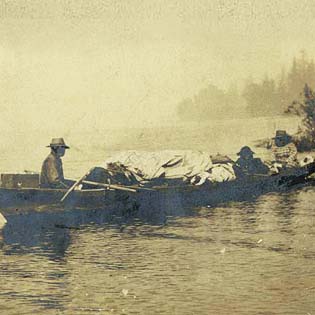AUDIO
MP3 Download: Listen to Dr. Lorraine McConaghy, a Public Historian at the Museum of History and Industry (MOHAI), talk about transporation challenges Lake Washingtonpresented to settlers.
RESOURCES
- Submerged Cultural Resources Exploration Team (SCRET): Lake Washington Steamers
- HistoryLink.org essay on the Woodin family crossing Lake Washington to homestead on Squak Slough
Links to external websites do not constitute endorsement by WSDOT of the linked websites or the opinions, information, products or services contained therein.

Water-based transportation continued to be essential after settlers began to build homesteads, log timber, and mine ores in the hills and valleys in King County. For some time after settlement began, the new arrivals relied on Indian canoes for transporting people, and for moving farm produce and natural resources to markets in Seattle.
These early travelers used human power. Canoes had to be paddled and scows, barge-like vessels, had to be rowed or poled.
In the late nineteenth century, in about the 1870s, steam power arrived on Lake Washington and transformed the movement of people and freight. Steam engines added to scows, and steamers pushing barges reduced the time required to travel across the lake and increased the amount of freight that could be carried by vessels. The volume of goods, including coal and lumber, moving to markets increased exponentially in the 1890s and 1900s.
For more information about early transportation, visit HistoryLink.org.
